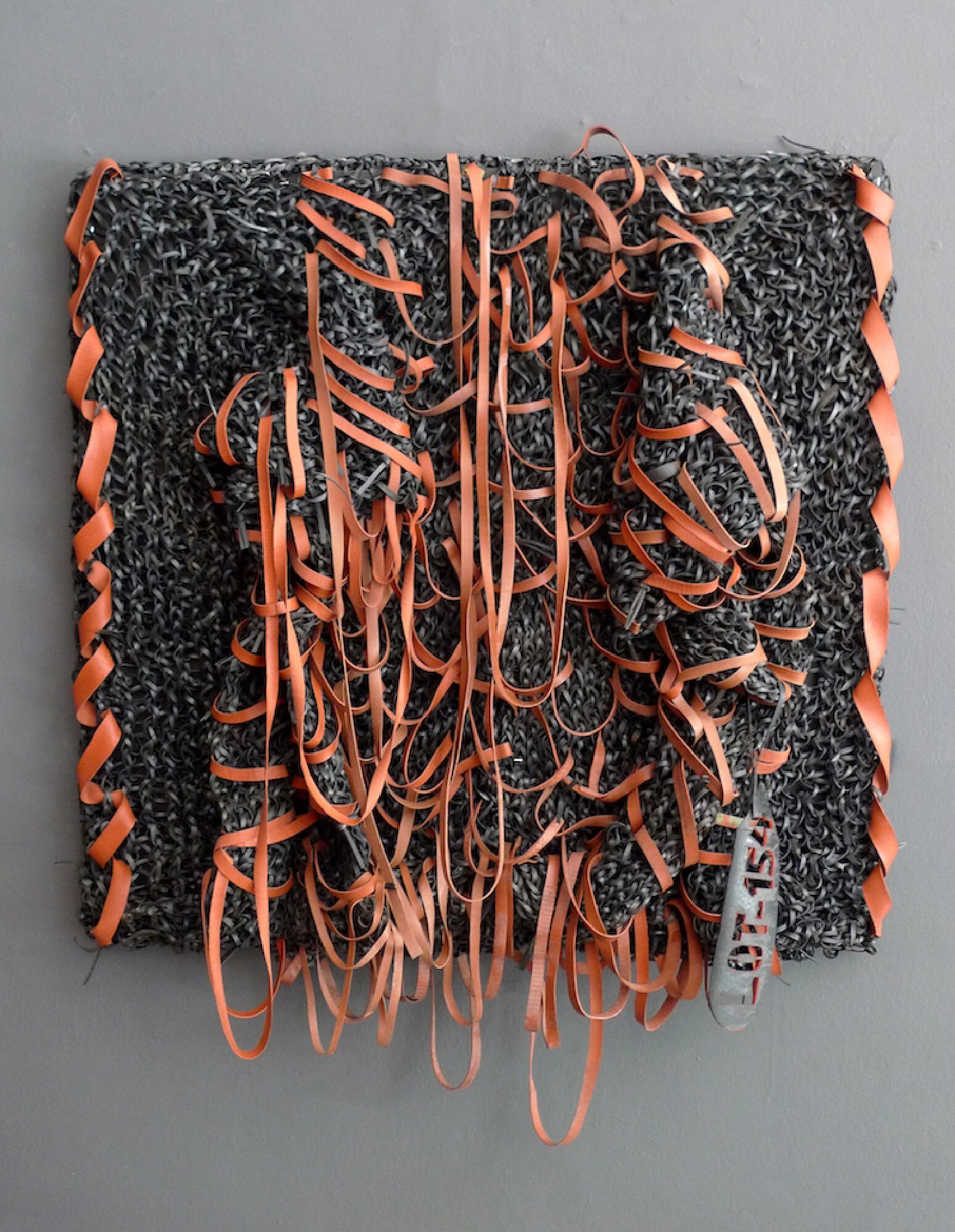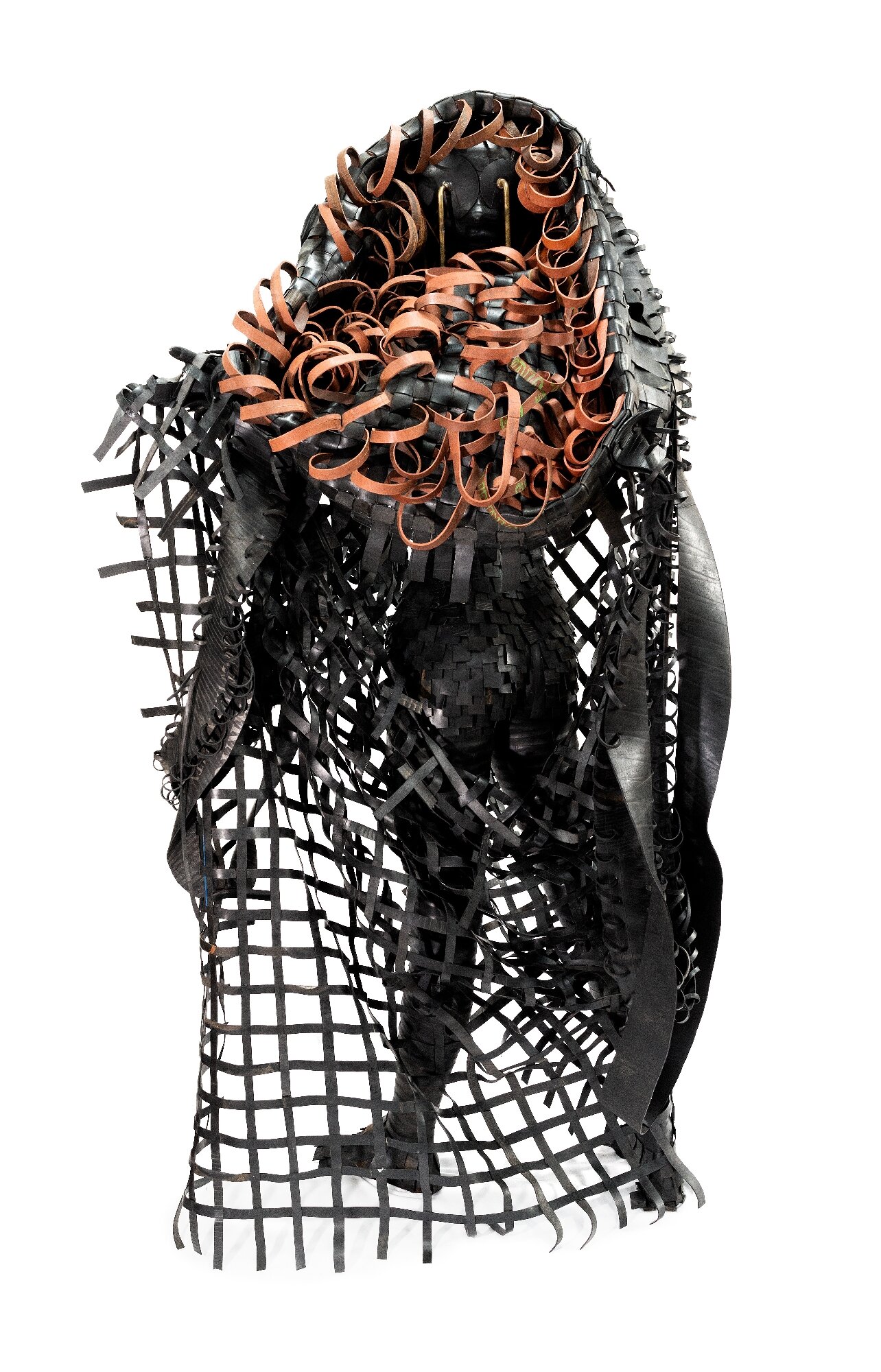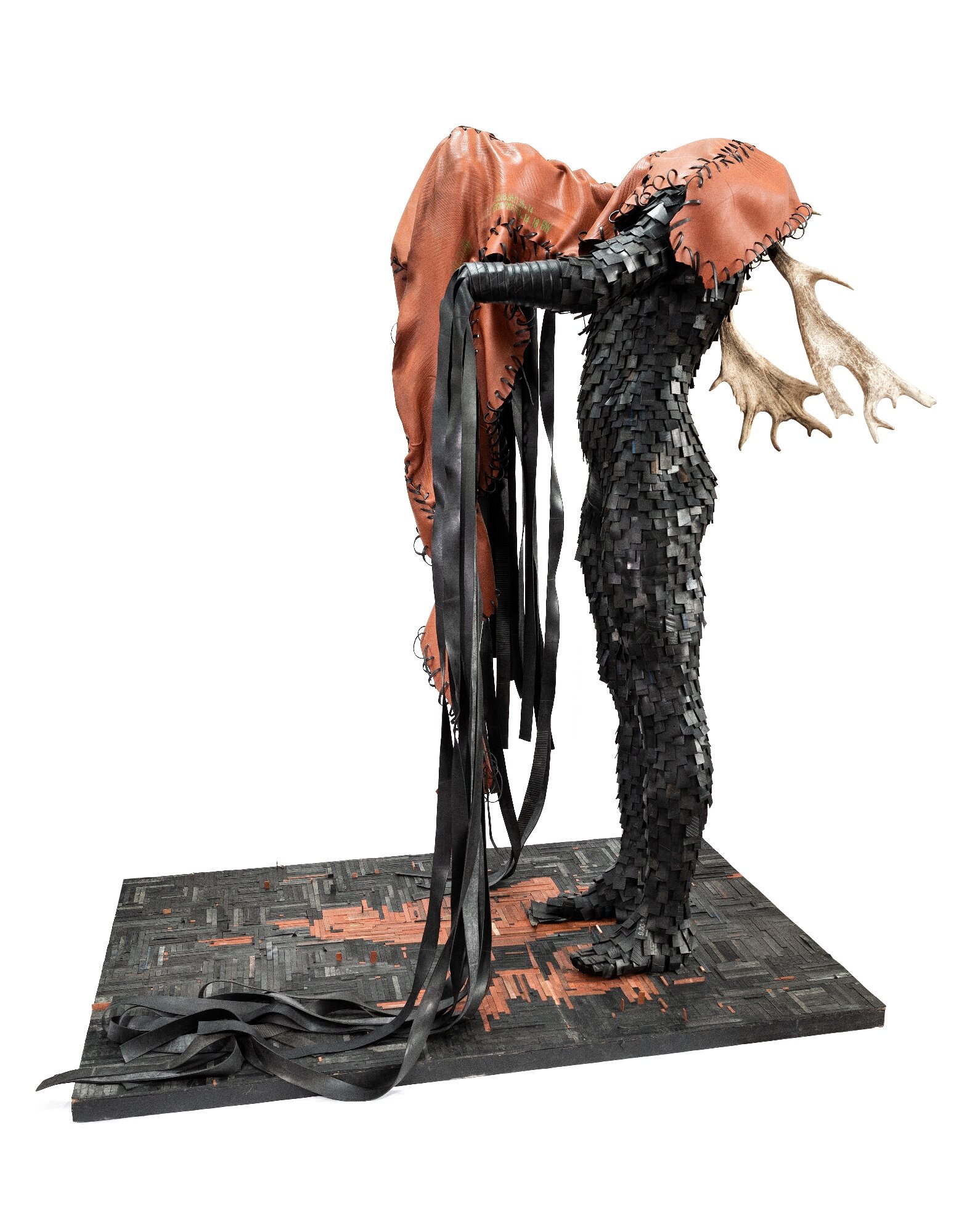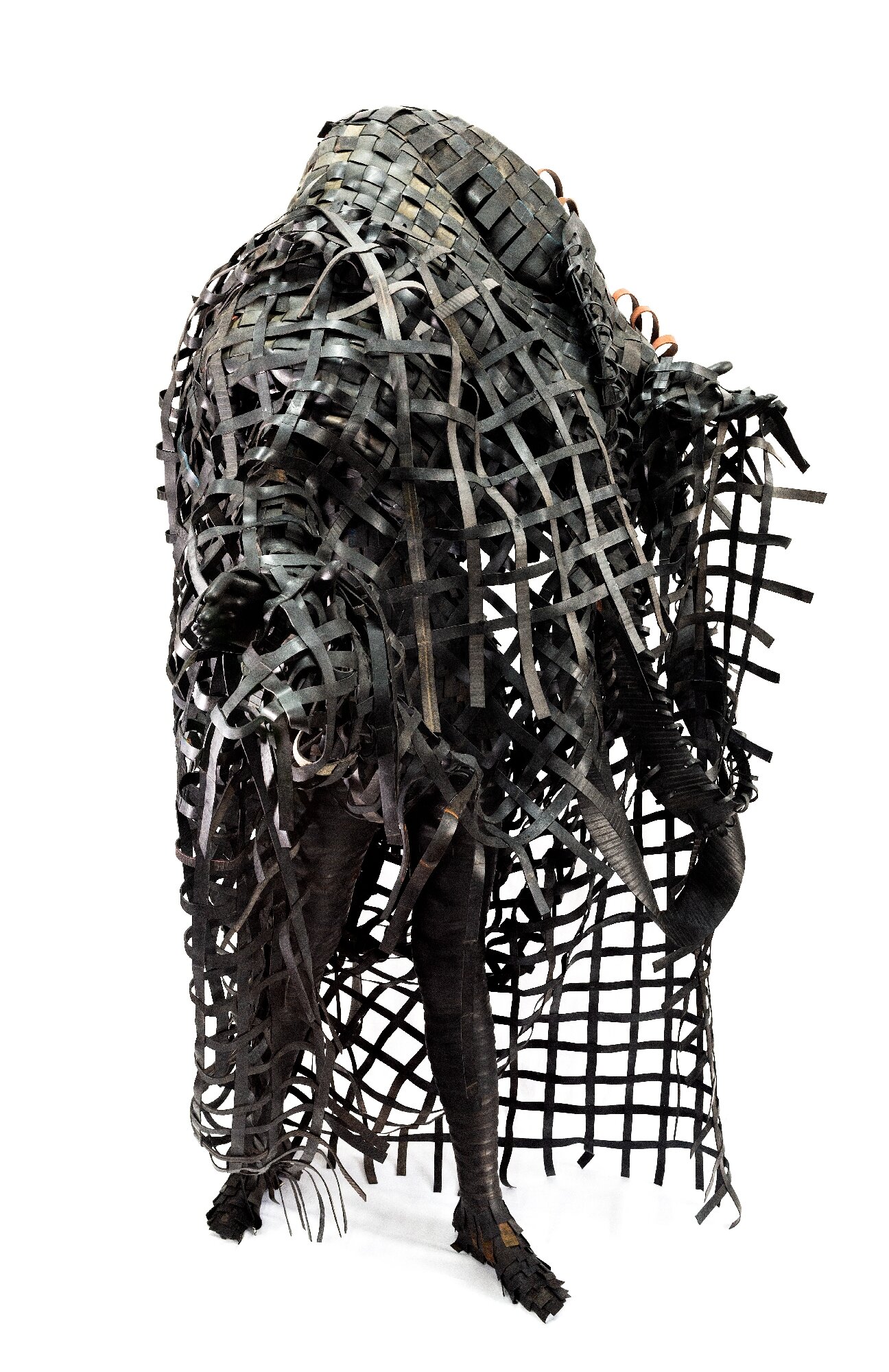In conversation with the acclaimed Congolese artist at Stellenbosch Triennale
The first time I encountered Patrick Bongoy was two years ago. Commissioned to write about a solo show, an interview intended to be brief morphed into an ongoing conversation about the environment, humanity and the way in which humans can move away from their anthropocentric tendencies. Now, presenting his work Across Currents at the 2020 Stellenbosch Triennale as part of the acclaimed Curator’s Exhibition, it is clear that Bongoy remains true to his mission; fusing an earth-friendly ethos with discarded materials and an almost-military like work ethic which allows his artworks to stand tall and clear amongst the rest.
“My work speaks in response to the global reality of literal and figurative environmental pollution,” the artist states. “This encompasses the entire spectrum from the erosion of economic viability for people, sociocultural decay impacting on community and individual behaviour and natural rural and urban landscape.”
Bongoy is no newcomer to the art world. Classically trained at Academy of Fine Arts in Kinshasa, he has been involved in group and solo exhibitions at home and abroad. His work has appeared as part of 1-54 Contemporary Art Fair in London, as well as the Plural Dimension exhibition at the Wallonia Centre in Brussels. These days, Bongoy lives and works in Cape Town, and continues to participate in workshops, experimental projects and exhibitions between South Africa and his native country, the Democratic Republic of Congo, driving his artistic and environmentalist missions.
Upon entering the Curator’s Exhibition, Patrick’s installation was hard to miss and impossible not to recognize. Using his signature flattened rubber, impeccable lattices, fine twine and a sturdy sculpture frame, his style and approach is inimitable. But his new work shows an artist who has evolved since our first discussion. Grand and imposing, the initial appeal of the work is it’s scale, but a closer look reveals a renewed dedication to minute detail: letters of the alphabet individually cut out and strung up by hand; careful positioning so that the hessian strips can catch the light and wind as it moves through the installation; and a carefully constructed base of materials as opposed to a flat earthen floor.
When the exhibition first opened to the press, work on the installation was still underway. I was nervous for him and said so. Bongoy, dressed in one of his usual effortless all-black ensembles, seemed unfazed about the timing, preferring to chat about the scorching weather and my plans for the year. When I go over to take pictures, he explains his nonplussed attitude: “We are almost there but this is the kind of work that takes time. I want to make sure I get all the details right,” he explains, eyes laser-focused on the tiny knot he is loosening.
“My work speaks in response to the global reality of literal and figurative environmental pollution”
But it’s not a complete departure from his other works. At its core, the themes of physical displacement and entrapment seem to come through strongly, and the constant use of rubber as an eerie throwback to Belgian Congo’s brutal and bloody past. As ArtThrob’s Tammy Morton writes about the piece, “The architectural structure reinforces an idea of power struggles between the people of the DRC and the powers that controlled it”.
Beyond the realm of subject matter for his artwork, this is a narrative Patrick knows well, having personally experienced being trapped and displaced. Starting out as an artist in DRC, Bongoy was forced to flee because of the government’s reaction to one of his works of protest art. The enclosed, initially impermeable structure is reminiscent of both mental and physical enclosure. And the metaphorical approach is one he has mentioned before; seeming now less a theme and more an artistic commitment: “What we pursue in our works can be both personal, local and universal… I still see myself as being on a mission to expose, mirror and amplify what’s happening in our world.”
Read our Stellenbosch Triennale review here.
The Stellenbosch Triennale is temporarily closed in line with the nationwide lockdown for Covid-19 prevention. Details about its reopening will be available here.
Words Binwe Adebayo
Photography Dillon Marsh
Visit Patrick Bongoy
Visit Stellenbosch Triennale
Published on 07/04/2020





